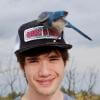Hi everyone! I study bird behavior and am interested in tracking technologies that could be miniature enough for hummingbirds. I know of radiotags that can be used, but very small 9-axis sensors were recently brought to my attention. This seems like it could have enormous potential for tracking 3D movements at a fine scale.
So, I started looking through the literature to see how this has been used, but I can't seem to find much at all besides it's use as a suppliment to a GPS system when satellites couldn't be reached. That's very surprising to me given how these sensors are very tiny, and use very little energy (as far as I understand). Basically, I'm trying to figure out what "the catch" is. Why don't more people use them? I know there tends to be drift over time but I haven't been able to figure out how innacurate things can get.
If anyone has experience with 9-axis sensors I would love your input! Many thanks!
14 April 2019 1:18am
Hi Jay,
It depends on what you want to do. The "catch" is they aren't very useful for figuring out where it is.
In reality only expensive and large military grade accelerometers can do positioning, all the others have so much drift they are useless after a few seconds. But one researcher recently used a clever technique to zero the drift periodically, so it was useful for localisation within a building for instance.
On the other hand, it could be used as an activity tracker (a "fitbit"). The challenge here might be affixing the thing firmly onto the bird so you pick up the bird motions, instead of it flopping around.
If you're in Panama, you should talk to Digital Naturalism Labs in Gamboa.
-harold

Alasdair Davies
Arribada Initiative
14 April 2019 11:53pm
Hi jjinsing,
You could take the 9 axis LSM9DS1 sensor from the Horizon tag (open source) + firmware and build a custom module. Your limitation will be the coin cell battery and switching to a smaller microcontroller to get the size and weight down. What's the weight of the hummingbirds? 11g odd?
There is a tarantular tracking project that requires a similar sized tag (bluetooth base stations to track), so if that gets built you could inherit that in the future. Htarold is correct in that actual location will need a local rfid / base station at the feeding station to know where they are and you'd be looking at behavioural and energetics logged to flash etc.
Cheers,
Alasdair
15 April 2019 2:36am
Hi Jay, Alastair,
Small world! You've got a great resource at your doorstep then (c:
Your idea of tracking the birds between known feeding locations is a good one, and it's made use of here. But I don't know if the drift will cooperate over that long a period. A colleague who looked into cheap accelerometers for navigation told me it doesn't work after 10 seconds or so. But this was some years ago and things may have improved. It might be possible to detect when a bird is stationary, to zero the device. This is like when a fireman puts his foot down in the above case.
Thanks,
-harold










Harold Tay